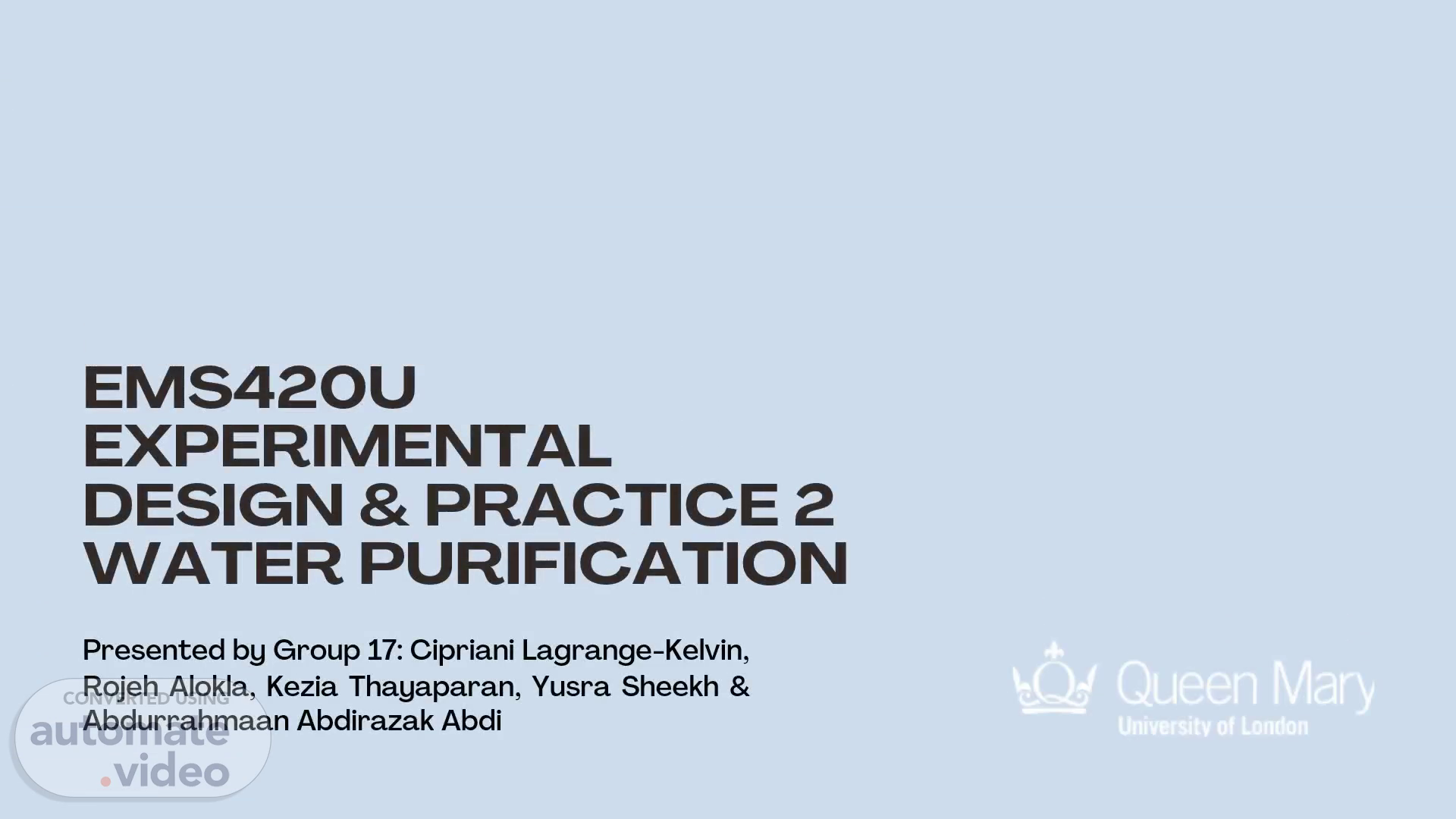Scene 1 (0s)
EMS420U EXPERIMENTAL DESIGN & PRACTICE 2 WATER PURIFICATION Presented by Group 17: Cipriani Lagrange-Kelvin, Rojeh Alokla , Kezia Thayaparan, Yusra Sheekh & Abdurrahmaan Abdirazak Abdi.
Scene 2 (11s)
The purpose of water purification.. Water is the most basic human need, and without it, survival is impossible. Having a source of pure and clean water is above any other priority. Sometimes, water can accommodate contaminants such as high levels of microbes, copper, or even radioactive materials, altering the odour , colour , or taste of water. Billions of people around the world do not have access to a sufficient supply of potable water, and hundreds of thousands of young children die every year due to this. It is the duty of humanity to ensure that this calamity is diminished year on year. Water purification is directly related to a higher quality of life and health. It is also an indicator of status in lower-income countries. By providing access to pure water to all, the planet becomes a better place..
Scene 3 (1m 40s)
Cipriani Lagrange-Kelvin. Brief Introduction. Water purification is carried out as a multi-stage process involving UV-Vis spectroscopy, pH titration and finally the purification of water.
Scene 4 (3m 20s)
Measured the absorbance of the "contaminated water" and gave a reading of 0.714A [Figure 5]. Inserted the measured absorbance (y-value) into the concentration vs absorbance graph equation y=0.002x+0.0091 [Figure 4], to find the concentration (x-value) of the Ni +2 ions. The concentration was determined to be 352.45 mM ..
Scene 5 (4m 9s)
[Figure 6 ]. How the density of sulfonate groups per gram of resin was determined. To neutralise the amberlite solution, a small amount of sodium hydroxide (NaOH) was poured from the burette into the beaker during the titration. This process was repeated, with the volume of NaOH added and the pH value of the solution recorded after 5-10 minutes [Figure 6]. A graph of pH vs. volume of NaOH was used to generate the equation y=0.108x + 4.7072 [Figure 7]. Kezia Thayaparan.
Scene 6 (5m 6s)
How successful the removal of ni2+ ions was.. An ion exchange resin is used as a separation process. In this process, nickel is removed and is replaced with more innocuous ions such as sodium. The value of the absorbance of the water sample before decontamination was 0.714A [Figure 8]. The value achieved after was 0.143A [Figure 9]..
